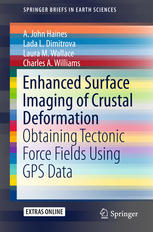

Most ebook files are in PDF format, so you can easily read them using various software such as Foxit Reader or directly on the Google Chrome browser.
Some ebook files are released by publishers in other formats such as .awz, .mobi, .epub, .fb2, etc. You may need to install specific software to read these formats on mobile/PC, such as Calibre.
Please read the tutorial at this link: https://ebookbell.com/faq
We offer FREE conversion to the popular formats you request; however, this may take some time. Therefore, right after payment, please email us, and we will try to provide the service as quickly as possible.
For some exceptional file formats or broken links (if any), please refrain from opening any disputes. Instead, email us first, and we will try to assist within a maximum of 6 hours.
EbookBell Team

5.0
30 reviewsThis book takes an in depth look at a novel methodology for analyzing Global Positioning System (GPS) data to obtain the highest possible resolution surface imaging of tectonic deformation sources without prescribing the nature of either the sources or the subsurface medium. GPS methods are widely used to track the surface expression of crustal deformation at tectonic plate boundaries, and are typically expressed in terms of velocity fields or strain rate fields. Vertical derivatives of horizontal stress (VDoHS) rates at the Earth’s surface can also be derived from GPS velocities, and VDoHS rates provide much higher resolution information about subsurface deformation sources than velocities or strain rates. In particular, VDoHS rates allow for high precision estimates of fault dips, slip rates and locking depths, as well as objective characterization of previously unknown (or hidden) tectonic deformation zones.